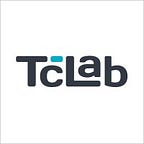Testing Complex Software: Challenges in Manual Testing
Manual testing of complex software applications poses significant challenges that can impact the quality and effectiveness of the testing process.
Two major pain points in this area are the difficulty in anticipating all possible use cases and the influence of human bias.
This article explores these challenges and provides practical solutions, recommendations, and guidance to help software testers overcome them.
The Challenges
Testing Complex Software
Complex software applications often have a vast range of functionalities and possible user interactions, making it challenging for testers to anticipate every scenario during manual testing.
This complexity can lead to overlooked use cases, resulting in potential bugs in production.
Human Bias in Testing
Testers may unconsciously focus on test cases they believe will pass, neglecting edge cases or less obvious scenarios.
This bias can lead to an incomplete testing process, where critical issues remain undetected until later stages, increasing the cost and time for fixes.
The Solutions
Embracing Automation
While manual testing is indispensable, integrating automated testing can significantly enhance the testing process. Automation can handle repetitive tasks, allowing you to focus on more complex test scenarios that require human judgment.
Exploratory Testing
This approach encourages you to think creatively and explore the application without predefined test cases. It helps uncover issues that structured testing might miss and is particularly useful in the early stages of development.
Diverse Testing Teams
Building a diverse testing team can mitigate the risk of human bias. Different perspectives can lead to a more comprehensive understanding of potential user behaviors and scenarios.
Effective Test Management with TestCaseLab
TestCaseLab is a test case management tool that helps organize and manage the testing process efficiently. It offers features like test case creation and management, planning, and execution tracking, making it easier to cover a wide range of test scenarios comprehensively.
Feel free to try it with a 30-day free trial here: https://bit.ly/3HZv4g1
Risk-Based Testing
Prioritize testing based on the potential impact of failures. This approach helps focus efforts on the application's critical areas, ensuring that major issues are identified early.
Continuous Learning and Adaptation
Encourage a culture of continuous learning and adaptation among testers. Regular training and knowledge-sharing sessions can help us stay updated with the latest testing methodologies and tools.
User Personas and Use Case Modeling
Creating detailed user personas and use case models can help you think from different user perspectives, ensuring a more thorough exploration of potential use cases.
Feedback Loops
Implementing feedback loops where developers and testers collaborate closely can lead to more effective identification and resolution of issues.
Testing complex software applications manually is challenging, but with the right strategies and tools, these challenges can be effectively managed.
By addressing the issues of complexity and human bias head-on, you can ensure that you deliver high-quality software that meets user needs and expectations.
💖 Do not forget to follow us on Linkedin and Facebook to learn more about software testing and tech news.
💎 Try TestCaseLab for free with a 30-day trial subscription here!
Please share this article with those who may benefit from it.
Thank you!
